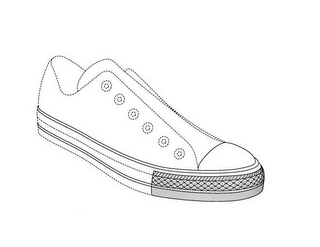The USPTO maintains two registers of trademarks. The main register is the principal register while the other is the supplemental register. Most trademark applications seek registration on the principal register. Registration on the principal register provides the trademark owner with more rights and benefits than the supplemental register.
Principal Register
The advantages of owning a registration on the Principal Register, include that the registration on the Principal Register:
- Provides exclusive nationwide right to use the mark in commerce on or in connection with the goods/services listed in the registration where there was no prior use by others (15 U.S.C. §§ 1057(b), 1115(a));
- Is constructive notice to the public of the registrant’s claim of ownership of the mark (15 U.S.C. §1072);
- Provides a legal presumption of the registrant’s ownership of the mark (15 U.S.C. §1057(b)),
- Operates to provide a constructive use of the mark as of the filing date of the application that results in the registration (15 U.S.C. §1057(c));
- Enables the owner the ability obtain the assistance of the US Customs and Boarder Protection to prevent importation of infringing foreign goods (15 U.S.C. §1124);
- Enables the option for registrant’s exclusive right to use a mark in commerce on or in connection with the goods or services covered by the registration to become “incontestable,” subject to certain exceptions (15 U.S.C. §§1065, 1115(b) );
- Provides a basis for using a simplified process under the Madrid Protocol to a obtain trademark registrations in foreign countries. (15 U.S.C. §1141b).
- Operates as a defense to state or common law claims of trademark dilution. (15 U.S.C. § 1125(c)(6)).
The Supreme Court said “Federal registration …. confers important legal rights and benefits on trademark owners who register their marks.” The Federal Circuit Court of Appeals said, “These benefits [of a federal trademark registration]—unavailable in the absence of federal registration—are numerous, and include both substantive and procedural rights.” So if you are serious about protecting your mark, you want to register it on the principal register.
Supplemental Register
However, when a trademark does not qualify for registration on the principal register, the supplemental register is a fall-back option. A trademark may not qualify for registration on the principal register if it is merely descriptive in relation to the goods/services and has not acquired distinctiveness, i.e. recognition in the relevant marketplace as a trademark. A mark is merely descriptive if it describes an ingredient, quality, characteristic, function, feature, purpose or use of the corresponding goods or services.
Therefore, an applicant may seek registration on the supplemental register when its mark is merely descriptive and has not acquired recognition in the marketplace as a trademark. Further, an applicant might seek registration on the supplemental register if the mark has been refused on the principal register as merely descriptive and the applicant does not want to undertake the effort to attempt to prove to the USPTO that the mark has acquired recognition in the marketplace as a trademark.
The advantages of owning a registration on the Supplemental Register, include that the registration:
- Allows the registrant to use the registration symbol ®;
- May block the registration of a confusingly similar mark by a third party; and,
- Provides a basis for using a simplified process under the Madrid Protocol to a obtain trademark registrations in foreign countries.
The time period that a trademark has been use is one factor in determining whether a mark has acquired distinctiveness (and is thus register-able on the principal register). 15 U.S.C. §1052(f), provides that “proof of substantially exclusive and continuous use” of a designation “as a mark by the applicant in commerce for the five years before the date on which the claim of distinctiveness is made” may be accepted as prima facie evidence that the mark has acquired distinctiveness. The USPTO is not required to accept 5 years of use as establishing acquired distinctiveness, but they can and often do.
Therefore, one strategy to protect a merely descriptive mark is to seek registration on the supplemental register. Then after a period of time, such as 5 years, the applicant can seek registration on the principal register and rely on section 1502(f) for establishing acquired distinctiveness. Before seeking registration on the principal register, the registration on the supplemental register has the chance of blocking others from registering the same or confusingly similar mark. It may also have the effect of deterring others from using the same or a confusingly similar mark.
Yet, reliance on 1502(f) this might not work if third parties start using the mark for the same goods in the marketplace before 5 years of use. Then the applicant might not be able to say that its use was “substantially exclusive.” Nevertheless, the applicant could still attempt to prove acquired distinctiveness through other evidence.
Choosing a descriptive mark tends to put the applicant at a disadvantage in terms of trademark strength, at least initially. However, overtime if competitors do not use the mark, the mark might acquire trademark protection if the appropriate steps are taken. Seeking registration on the supplemental register is one step that may help in the process.

